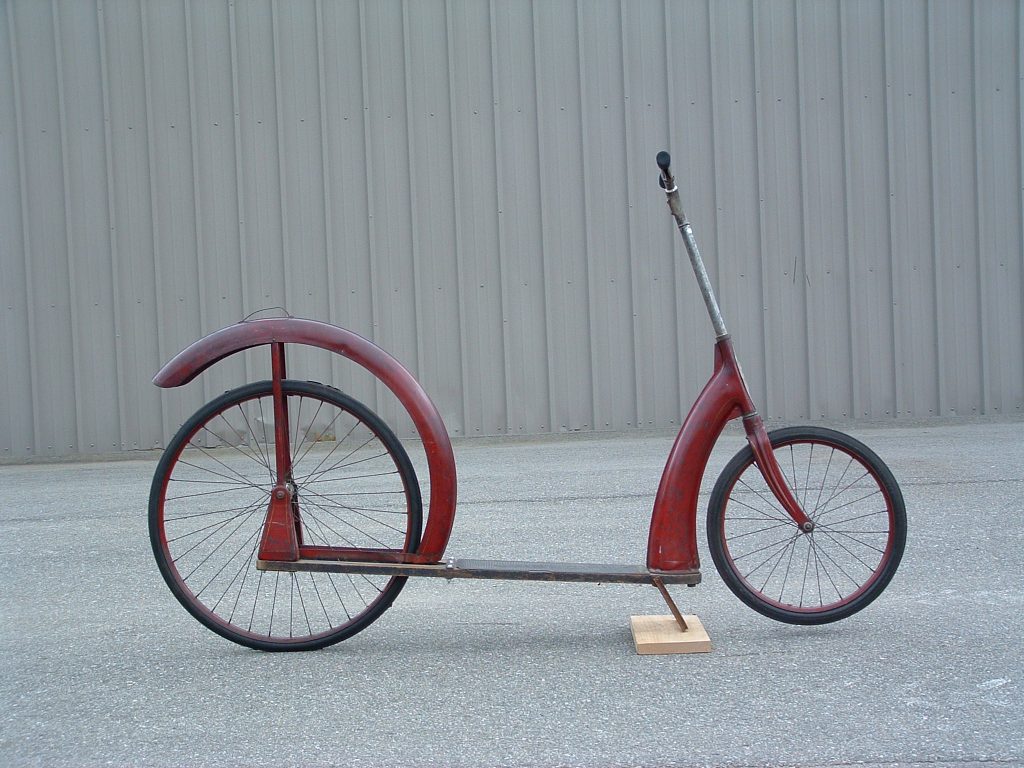1934-1937 Ingersoll-Rand Ingo-Bike










Description
The Bike that Bounces
Many companies tried new ideas during the Great Depression in order to survive. In 1934, Borg-Warner, a Chicago-based auto parts manufacturer, converted some of the factory capacity of their Ingersoll-Rand division to make a new kind of bicycle that didn’t need pedals, chains or gears. The rider powered the bike by pulling on the handlebars while bouncing on the platform. Department stores sold the Ingo-Bike for $24.95 (approximately $426 today).
The Ingo-Bike made a…
The Bike that Bounces
Many companies tried new ideas during the Great Depression in order to survive. In 1934, Borg-Warner, a Chicago-based auto parts manufacturer, converted some of the factory capacity of their Ingersoll-Rand division to make a new kind of bicycle that didn’t need pedals, chains or gears. The rider powered the bike by pulling on the handlebars while bouncing on the platform. Department stores sold the Ingo-Bike for $24.95 (approximately $426 today).
The Ingo-Bike made a splash with Hollywood appearances both on and off the screen. Numerous actors and actresses, including Rita Hayworth, were photographed using Ingo-Bikes to get around studio lots. It even made a cameo in a Three Stooges film called “Yes, We Have No Bonanza” where Curly rides an Ingo instead of a horse up to an Old West saloon. On the other side of the country, tourists and New Yorkers could rent Ingo-Bikes for use in Central Park. There were even Ingo-Bike races held across the country, including at the venerable Indianapolis Motor Speedway.
Unfortunately, the Ingo-Bike’s momentum did not last. The constant flexing of the platform led to cracks, particularly where the rear wheel met the platform. Only a skilled welder could mend the Ingo. This made the Ingo much more expensive to maintain than other bikes. By the end of 1937, new Ingos could be bought for as little as $5 ($85 today). Manufacturing issues and low sales led Borg-Warner to end production of the Ingo-Bike in 1937.
